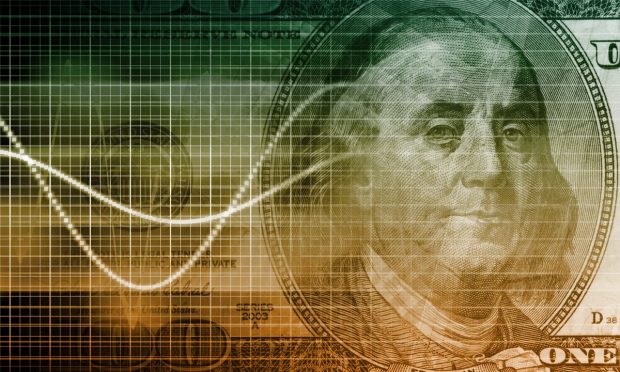Spending Rebound May Be On Shaky Ground

A spending rebound, yes — but the question is whether it will be sustainable, or whether the Delta variant will stop consumer sentiment, and the urge to keep buying now, in its tracks.
The latest data from the Commerce Department show that U.S. household spending, as measured in current dollars, was up by 1 percent in June. That was better than the 70 basis point increase that had been projected by economists. The rise in personal consumption dovetails with some of the commentary that has been coming out in earnings reports, where various management teams have been sanguine about consumer demand for everything from burgers (McDonald’s) to credit cards (Visa and Mastercard) and even auto loans (the banks).
But to get a sense of just how tenuous it all might be, consider that the same personal consumption data put out by the Commerce Department shows that personal consumption slipped by 10 basis points in May. Even though incomes have grown by 10 basis points, it important to note that inflation has well outpaced that gain.
Spending Power Lags Inflation’s Gains
Spending power, for lack of a better term, is not on par with the price hikes that are real and immediate. We contend, too, that the “wealth effect” spurred by stock market gains may also not be enough to keep consumers transacting, especially amid gyrations in the equity (and crypto) landscapes.
Consumer spending is the engine that drives the economy, accounting for roughly two-thirds of that measure. With that outsized contribution, the logic follows, consumer spending is what keeps the economy from shrinking — and is what drove GDP second-quarter growth to 6.5 percent annualized.
Here’s another possible fly in the ointment: If inflation keeps surging, the response may be for the Federal Reserve, at some point, to boost interest rates. That would drag on consumer demand in an effort to keep the economy from overheating. Higher interest rates, of course, increase the costs of borrowing, so the most visible impact might be seen in credit cards (at the payments giants such as Visa and Mastercard) and for mortgages and autos.
Though consumers have used the pandemic as a way to boost savings, and have gravitated toward debit spending (at the relative expense of credit spending), the green shoots in credit demand may prove fragile. The uncertainty of the coronavirus and its variants may serve as headwinds in the reopening of store and restaurants — and as a result, hiring trends may get a bit lumpy.
That also would impact cross-border and domestic travel, which has been part of that credit spending rebound, as documented in commentary from Visa and Mastercard.
It’s cheering to see the positive gains in consumer spending — but it all may rest on shaky ground.